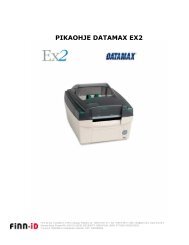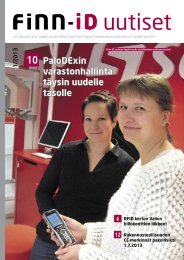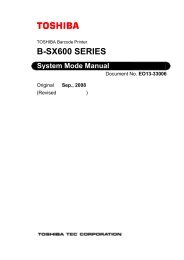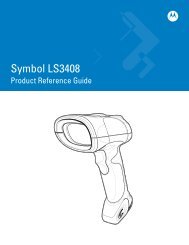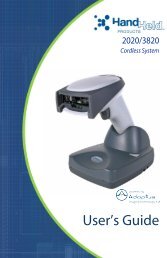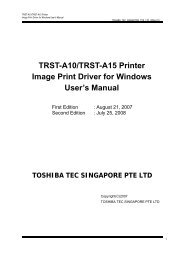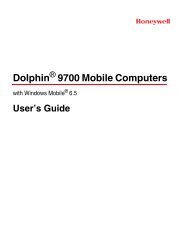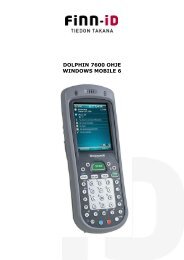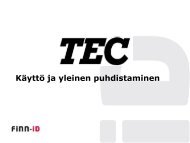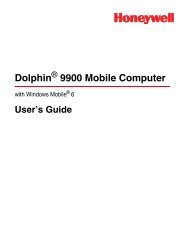INfinity 510 Protocol Reference Guide - Sirit
INfinity 510 Protocol Reference Guide - Sirit
INfinity 510 Protocol Reference Guide - Sirit
You also want an ePaper? Increase the reach of your titles
YUMPU automatically turns print PDFs into web optimized ePapers that Google loves.
Chapter 1 - Introduction<br />
INTRODUCTION<br />
CONTROLLING THE INFINITY <strong>510</strong> READER<br />
About Namespaces<br />
A namespace is an abstract<br />
container which is filled by<br />
names that represent or<br />
stand for configuration<br />
items or actions.<br />
As a rule, names in a<br />
namespace cannot have<br />
more than one meaning,<br />
that is, two or more things<br />
cannot share the same<br />
name.<br />
A namespace is also called<br />
a context, as the valid<br />
meaning of a name can<br />
change depending on what<br />
namespace applies<br />
The <strong>INfinity</strong> <strong>510</strong> reader is a highly versatile RFID system that can be<br />
configured to operate in almost any RFID application. As a result, all reader<br />
management functions and parameters are easily configured by sending<br />
specific Command Line Interface (CLI) commands to the reader’s command<br />
channel. These commands are organized using namespaces.<br />
A namespace is a context for identifiers and is usually written in human<br />
readable form. A configuration namespace provides organization and<br />
hierarchy to a set of configuration variables. Namespaces can be nested,<br />
with multiple namespaces existing under a higher namespace.<br />
For example, all communication link configuration values exist in the com<br />
namespace. Using the com example, there are communications link<br />
settings for both the serial port and Ethernet network port. As a result,<br />
there is a com.serial and a com.network. Therefore, to change the baud<br />
rate, you would send the command “com.serial.baudrate = 9600”.<br />
As shown by this example, any identifier defined within a namespace is<br />
associated with the namespace and the same identifier can be used within<br />
different namespaces. This prevents conflicts within the namespaces<br />
themselves and allows the namespaces to nest forming a namespace tree.<br />
The root of the tree is always the unnamed global namespace.<br />
Top-level namespaces are provided for the following:<br />
Reader – Generic reader level functions<br />
Setup – Reader setup<br />
Info – Reader information<br />
Version – Hardware and software versions<br />
Com – Communication level features<br />
Tag – Tag control features<br />
DIO – Digital input and output features<br />
Antennas – Antenna configuration<br />
Modem – Low-level modem control<br />
User – User defined variables<br />
Errors – Errors returned by reader<br />
Events – Events returned by reader<br />
Diag – Diagnostic features<br />
Enum – Lists (arrays) of values for specific commands<br />
<strong>INfinity</strong> <strong>510</strong> <strong>Protocol</strong> <strong>Reference</strong> <strong>Guide</strong> 1



